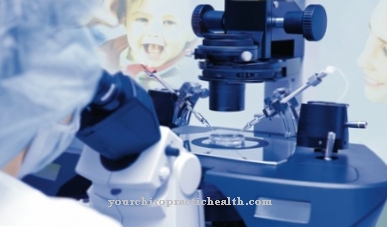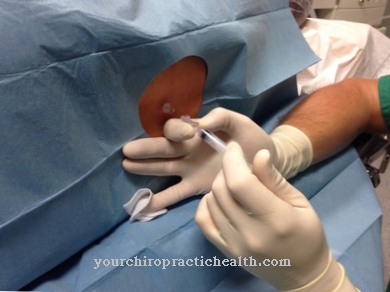A Stool examination For most people, this is an uncomfortable method of determining the cause of the disease. Such a sample often provides reliable information. It can be used in the context of prevention or therapy.
What is the stool exam?

Stool is the end product of digestion. It consists of different components. In addition to non-usable food residues, there are also intestinal mucous membrane cells, digestive juices and bacteria. If a disease is present, it can be diagnosed, for example, from a bacterial population or by finding parasites in the stool.
The first step in the stool examination is to submit a stool sample from the patient. This is either taken directly in the practice or at home with the appropriate material. The stool examination is ultimately based on the assessment of various factors. In addition to color and weight, these also include possible blood cells and consistency. On the one hand, the feces are examined by external inspection, on the other hand, by various methods in the medical laboratory.
Function, effect & goals
The stool examination is used for early detection and diagnosis. In this way, possible diseases can be identified before the first symptoms appear. In the case of some diseases, early diagnosis plays an important role in the further course and prognosis. In the context of cancer, for example, the patient's life can be saved. If there are already complaints, the examination of the faeces provides an initial clue, verifies or falsifies the suspicion that already exists.
Most diseases require a correct assessment of the underlying cause for sustainable therapy. This offers a stool examination for numerous health phenomena. First, the external appearance of the faeces is examined. In some cases, traces of blood and pus can already be found here. Different shades of color indicate different diseases. For example, a whitish stool can draw attention to a biliary obstruction. However, the absence of discoloration does not mean that further tests will not reveal any abnormalities. The weight of the stool can only be interpreted if a sample has not been taken but the patient has been instructed to collect all of his stool.
People typically excrete around 100 to 200 grams of feces a day. For vegetarians and vegans, the amount is often higher due to a higher-fiber diet. Larger proportions can, for example, indicate gluten intolerance, fatty stools or poor nutrient absorption by the organism. Some diseases are accompanied by bloody stools. This is sometimes hidden in the excretions and is therefore referred to as occult, because there is no evidence of the presence of red blood cells from the outside. In order to reveal occult blood, certain tests must be used. A distinction is made between the chemical and immunological test. While the first is done by the doctor, the second can be used at home.
For the occult chemical blood test, patients must submit a stool sample on three days. The feces are applied to the designated areas of the test strip and then submitted to the attending physician. In the laboratory, a specific reagent liquid helps to detect irregularities. This is dripped onto the individual stool samples. If the field turns blue, there are small amounts of blood in the feces. Such a test can determine a very low level of blood cells and is considered very reliable if certain factors are taken into account.
Meat consumption should be minimized before and during the test. Women should wait three days after their period before starting the trial. The immunological test is suitable for use at home. Again, patients have to collect samples for three days. These are dissolved in a liquid and the substance is placed on a test strip. The test will show the result within five to ten minutes. However, a chemical test is considered to be more informative.
The Tumor M2 PK test helps identify certain enzymes made by cancer cells. In this way, a statement can be made about a possible tumor. The test can be done at home and sent to the laboratory. However, the insurance does not pay for such a benefit. The cost is around thirty euros.
You can find your medication here
➔ Medicines for digestive problems



























